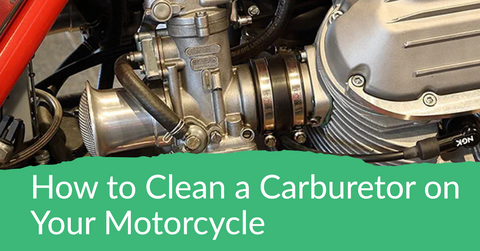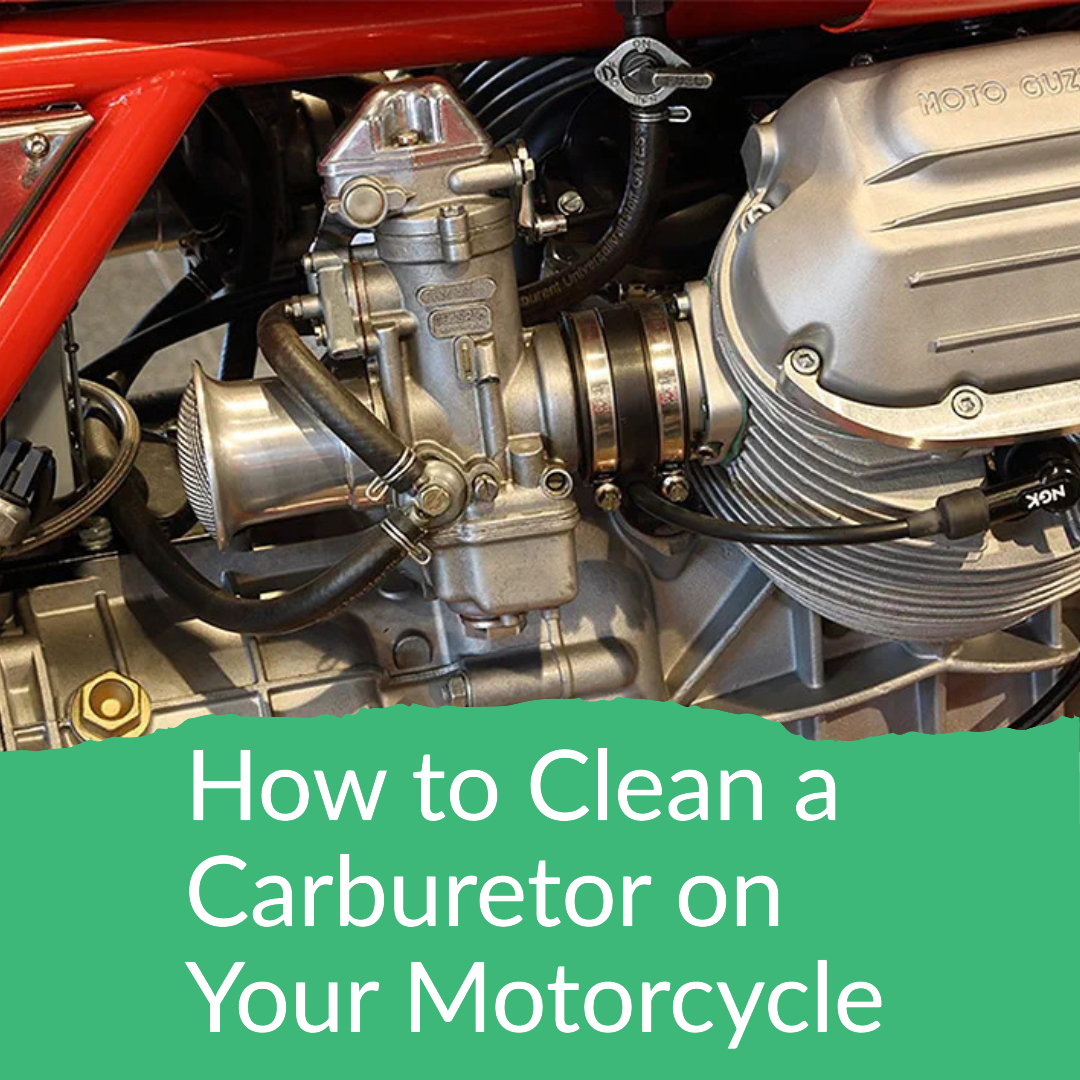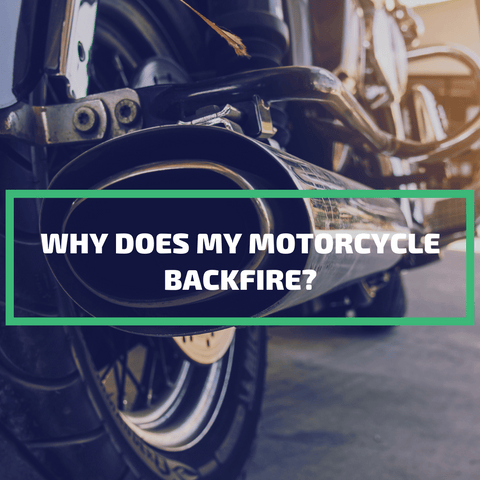
Published: 13.6.23
Updated: 20.8.24
Disclaimer: This article is intended for informational purposes only. While it aims to provide accurate and up-to-date information, it should not be used as a replacement for professional advice or expertise. Always consult with a trained mechanic or professional if you are unsure about any steps or procedures. Performing maintenance on your motorcycle can pose risks if done incorrectly. The author and publisher of this article are not responsible for any damages, injuries, or losses that may result from the use of the information provided. Please exercise caution and use your judgement when maintaining your motorcycle. Always follow the manufacturer's instructions and guidelines.
Is your motorcycle behaving erratically?
It could be due to lack of maintenance. You can refer to this article on the benefits of regular maintenance.
Maybe it's refusing to start, idling roughly, or guzzling more fuel than usual?
These are common frustrations many motorcycle owners face and they often point to one culprit - a dirty carburetor.
If you are dealing with a quad bike, you might find this guide on quad bike maintenance useful.
When dirt and grime build up in the carburetor, it hampers the crucial process of mixing air and fuel, leading to inefficient running or even total engine breakdown.
Sounds scary, right?
But what if we told you there's a way to restore your motorcycle's performance and save you from expensive repairs or replacements?
You'd probably be intrigued!
Well, we have good news. It's simpler than you think and doesn't need any specialist skills.
Imagine hitting the open road with your motorcycle purring smoothly, responding instantly to throttle changes, and delivering great fuel efficiency.
This is very much achievable with regular and appropriate maintenance, for which you can refer to this comprehensive guide on maintenance and repairs.
From identifying the problem to collecting the right tools, draining the carburetor, cleaning, and reassembling, we've got you covered.
In case you're dealing with kids' bikes, there's a detailed safety guide for kids' petrol bikes that could be useful.
Understanding the Importance of a Clean Carburetor

Before we roll up our sleeves, it's worth understanding why a clean carburetor is crucial for your motorcycle.
Essentially, the carburetor is responsible for mixing air and fuel in the perfect proportion for combustion.
But if dirt or debris blocks it, this process is hindered, leading to inefficient running, or in severe cases, a complete engine breakdown.
Signs That Your Carburetor Needs Cleaning
How do you know when your carburetor needs cleaning?
Here are a few red flags to look out for:
- Your engine refuses to start or cranks excessively before turning over.
- The engine is running lean, which means there's an imbalance between air and fuel.
- The engine becomes idle or stalls frequently.
- There's flooding fuel in the carburetor, a sign that a blockage is preventing the needle valve from closing properly.
If you notice any of these symptoms, it's time to give your carburetor a good clean.
Related: Why Does My Motorcycle Backfire?
Tools You'll Need
Before you start, ensure you have these tools at hand:
- Screwdriver.
- Carburetor cleaner spray.
- Compressed-air gun or a can of pressurised air.
- Small wire or a carburetor cleaning tool.
- Clean cloth.
- Seafoam or Liqui Moly 4T additive (optional).
Steps to Clean Your Motorcycle's Carburetor
Step 1 - Draining the Carburetor
Draining the carburetor is the initial step in this cleaning process.
Start by locating the drain screw on your carburetor - this is typically positioned at the bottom.
Before removing the drain screw, place a container underneath the carburetor to collect the fuel that will drain out.
This will help to prevent spills and potential messes.
Then, carefully use a screwdriver to remove the drain screw and allow the fuel to flow out.
Let the fuel drain completely. Be careful not to lose the drain screw during this process.
Step 2 - Cleaning the Float Bowl and Carburetor Body
Next, it's time to clean the float bowl and the carburetor body. The float bowl is held in place by screws which you'll need to remove.
Use your screwdriver for this task, ensuring you keep track of these screws as they will need to be replaced later.
Once the float bowl has been removed, you can commence cleaning.
Using a carburetor cleaner spray, liberally spray into the float bowl and the carburetor body.
Make sure you cover all surfaces and crevices.
If you don't have a carb cleaner spray, a clean cloth can also be used to wipe away dirt and grime, but a specialised cleaner will generally give a more thorough clean.
Allow the cleaner to sit for a few minutes to dissolve any stubborn dirt or deposits before wiping clean.
Remember to handle these parts carefully to avoid causing any damage.
Step 3 - Cleaning the Jets and Passages
To clean the jets and passages, you'll need a fine wire or a specialised carburetor cleaning tool.
These parts of the carburetor are quite delicate and small, making them slightly more challenging to clean.
Carefully thread your wire or cleaning tool through the jets and passages to remove any build-up or blockages.
Make sure you're gentle throughout this process to avoid damaging these vital parts of the carburetor.
Step 4- Reassembling and Testing
Once everything is clean, it's time to put it all back together. Start by reattaching the float bowl to the carburetor body, remembering to replace and tighten the screws you removed earlier.
Follow this by replacing the drain screw on the bottom of the carburetor.
Once the carburetor is fully reassembled, you can then return it to its place in the motorcycle.
Ensure it's securely fitted before moving on to the testing phase.
Now it's time to test your motorcycle to ensure that the cleaning process has been successful.
Start your motorcycle and let it run for a while.
Listen for any unusual sounds and observe how the engine runs. It should start more easily, idle smoothly and respond well to throttle changes.
If you notice any issues, you may need to revisit the cleaning process or seek professional assistance.
Remember, maintaining a clean carburetor is critical to your motorcycle's performance and your overall riding experience.
If you're interested in more bike maintenance tips, check out this guide on keeping your kid's bike in top shape.
Related: What Happens if an Air Filter Gets Wet?
|
Steps |
Summary |
|
Step 1: Draining the Carburetor |
Remove the drain screw, and allow the fuel to flow out into a prepared container. |
|
Step 2: Cleaning the Float Bowl and Carburetor Body |
Remove the screws holding the float bowl in place, then clean the float bowl and carburetor body using a carburetor cleaner spray or a clean cloth. |
|
Step 3: Cleaning the Jets and Passages |
Use a small wire or carburetor cleaning tool to gently clean the jets and passages. |
|
Step 4: Reassembling and Testing |
Reassemble the carburetor and test the motorcycle to ensure it is running smoothly. |
Take the time to familiarise yourself with your motorcycle, understand its parts and functions, and learn how to care for it properly.
Don't forget to follow all safety guidelines and precautions, especially if you're working with fuel.
If you're looking for safety measures while working on your motorcycle, this article on quad bike safety measures could be insightful since the two bikes are similar.
Benefits of a Clean Carburetor

Maintaining a clean carburetor is crucial for your motorcycle's overall performance and longevity.
Here are some key benefits you can expect from a well-maintained carburetor:
Improved Engine Performance
A clean carburetor ensures optimal fuel-air mixture, leading to:
- Smoother acceleration
- More consistent power delivery
- Reduced engine hesitation or stalling
When your carburetor is free from dirt and debris, it can precisely control the fuel flow, allowing your engine to perform at its best across all RPM ranges.
Enhanced Fuel Efficiency
A properly functioning carburetor contributes significantly to fuel economy:
- Better fuel atomisation
- Correct fuel-air ratio
- Reduced fuel waste
By ensuring the right amount of fuel is mixed with air, a clean carburetor helps your motorcycle use fuel more efficiently, potentially saving you money at the pump.
Increased Engine Longevity
Regular carburetor cleaning can extend the life of your engine:
- Prevents harmful deposits
- Reduces wear on engine components
- Minimises the risk of major repairs
When your carburetor is clean, it helps maintain the correct balance of fuel and air, reducing the likelihood of rich or lean conditions that can damage your engine over time.
Improved Starting and Idling
A clean carburetor makes starting your motorcycle easier and improves idling:
- Quicker cold starts
- Stable idle
- Reduced risk of flooding
By ensuring proper fuel delivery, a clean carburetor helps your motorcycle start more easily and maintain a steady idle, especially in colder weather.
Environmental Benefits
A well-maintained carburetor can also have positive environmental impacts:
- Reduced emissions
- More complete fuel combustion
- Less unburned fuel released into the atmosphere
By optimising the fuel-air mixture, a clean carburetor helps your motorcycle run more cleanly, potentially reducing its environmental footprint.
Understanding these benefits highlights the importance of regular carburetor maintenance.
By keeping your carburetor clean, you're not just improving your motorcycle's performance, but also potentially saving money on fuel and repairs while reducing your environmental impact.
With these advantages in mind, let's move on to the step-by-step guide for cleaning your motorcycle's carburetor.
Troubleshooting Common Carburetor Cleaning Issues

Even with careful cleaning, you may encounter some issues during or after the carburetor cleaning process.
Here are some common problems and their solutions:
Engine still runs poorly after cleaning
If your motorcycle's engine continues to run poorly after cleaning the carburetor, there could be several reasons:
-
Incomplete cleaning: Some dirt or debris might still be clogging the jets or passages. Repeat the cleaning process, paying extra attention to these areas.
-
Incorrect reassembly: Double-check that all parts are correctly reassembled and tightened. A loose connection can cause air leaks and poor performance.
-
Worn out parts: If cleaning doesn't solve the issue, some carburetor components might need replacement. Consider installing a carburetor rebuild kit.
Fuel leaks
If you notice fuel leaking from the carburetor after cleaning:
-
Check the float: The float might be set too high or the needle valve could be stuck open. Adjust the float height according to your motorcycle's specifications.
-
Inspect gaskets and O-rings: These may have been damaged during cleaning. Replace any worn or damaged seals.
Engine flooding
If your engine floods easily after carburetor cleaning:
-
Examine the float: A sunken float can cause over-fueling. Replace if necessary.
-
Check the needle valve: If it's not seating properly, it can allow too much fuel into the bowl. Clean or replace as needed.
Hard starting or poor idling
These issues often indicate problems with the pilot jet or idle circuit:
-
Re-clean the pilot jet: This jet is prone to clogging and might need extra attention. Ensure it's completely clear of any obstructions.
-
Adjust the idle mixture screw: If cleaning doesn't solve the issue, try adjusting this screw. Turn it in small increments until you achieve a smooth idle.
Bogging or hesitation when accelerating
This could indicate issues with the accelerator pump or main jet:
-
Inspect the accelerator pump: Ensure it's functioning correctly and delivering the right amount of fuel.
-
Clean the main jet thoroughly: A partially clogged main jet can cause hesitation under acceleration.
Remember, if you're unsure about any step in the troubleshooting process, it's always best to consult a professional mechanic.
Proper carburetor function is crucial for your motorcycle's performance and longevity.
By addressing these common issues, you'll be better equipped to handle any challenges that arise during the carburetor cleaning process.
This will help ensure your motorcycle runs smoothly and efficiently after maintenance.
Related: How to Break in a New Dirt Bike Properly (Step By Step)
In Summary
Cleaning your motorcycle's carburetor doesn't have to be a daunting task.
With a bit of patience, the right tools, and the detailed guide provided in this article, you can have your bike running smoothly in no time.
A clean carburetor not only ensures optimal performance of your motorcycle but also saves you from potential expensive repairs or replacements down the line.
In this article, we explored the importance of maintaining a clean carburetor, signs that it might need cleaning, the tools required for the job, and a step-by-step process of cleaning it.
We also answered a few FAQs to address common concerns.
Remember, the key to a good ride is regular maintenance and care for your machine.
Motorcycle maintenance doesn't have to be complicated or intimidating.
With the right resources and a little bit of patience, you can keep your motorcycle running smoothly and save money in the process.
Get started with this guide on how to maintain your ride-on toy.
FAQs
How often should I clean my motorcycle's carburetor?
While there's no one-size-fits-all answer to this, a good rule of thumb is to clean your motorcycle's carburetor at least once a year. However, if your bike is older, or if you ride it frequently in dusty or dirty conditions, you might need to clean the carburetor more often. Always keep an eye out for signs that your carburetor needs cleaning, such as difficulty in starting, a rough idle, or reduced fuel efficiency.
Is it necessary to disassemble the entire carburetor for cleaning?
While this guide provides a comprehensive method of cleaning that includes disassembling your carburetor, it's not always necessary to take apart the entire unit for a simple clean. If your motorcycle is running well and you're conducting routine maintenance, using carburetor cleaner and compressed air can often be sufficient. However, if your bike is showing signs of carburetor trouble, a thorough disassembly and clean may be required.
Can I use home products like vinegar to clean the carburetor?
Yes, it's possible to use household items like vinegar to clean your carburetor, especially if you prefer a more natural, chemical-free approach. Vinegar is a great cleaner thanks to its acidity. You can use a solution of equal parts water and vinegar to soak your carburetor parts before scrubbing them clean. However, remember to thoroughly rinse and dry the parts after to prevent any corrosion. Also, do note that severe build-ups might still require a specialised carburetor cleaner for a thorough clean.







Share:
Tips to Ensure Safe Handling of Kids' Toy Car Batteries
How Long Does A 12v Ride-on Battery Last?